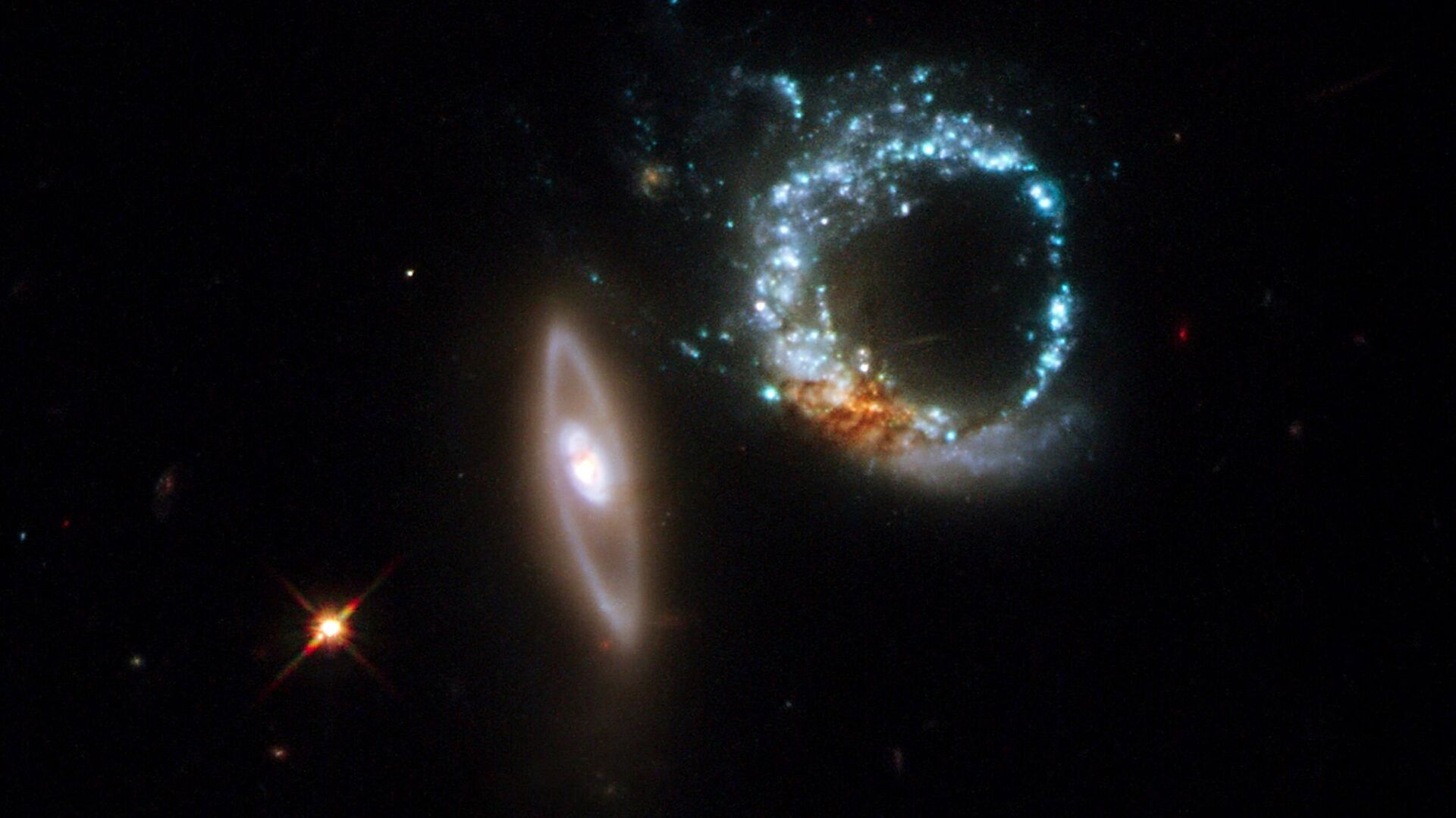https://sputnikglobe.com/20220409/astronomers-discover-space-laser-beaming-at-earth-from-5-bln-light-years-away-1094617342.html
Astronomers Discover 'Space Laser' Beaming at Earth From 5 Bln Light-Years Away
Astronomers Discover 'Space Laser' Beaming at Earth From 5 Bln Light-Years Away
Sputnik International
The scientists are planning to continue observations of the object and hope to discover more space lasers in the future. 09.04.2022, Sputnik International
2022-04-09T17:59+0000
2022-04-09T17:59+0000
2022-04-09T17:59+0000
space
laser
astronomers
galaxy
https://cdn1.img.sputnikglobe.com/img/07e6/04/09/1094620182_0:326:2485:1723_1920x0_80_0_0_5f07533751f6582222e496ec1e96f4a3.jpg
An international group of astronomers have discovered a powerful space laser emitting from a distant galaxy 5 billion light-years away from our planet. The discovery, which was made with the help of South Africa's 'MeerKAT' radio telescope, has been acknowledged by The Astrophysical Journal Letters. All the details concerning the finding are available on preprint server arXiv. A megamaser is a type of massless cosmic object which projects energy waves, which travel billions of light-years to reach the Earth.According to the study's co-author Jeremy Darling of the University of Colorado, "megamasers act like bright lights that" indicate "a collision of galaxies that is making new stars and feeding massive black holes". Once the galaxies merge, the gas they contain becomes very dense, producing a specific radio signal - a maser, Darling explained. The team of astronomers involved in the project named the laser 'Nkalakatha', which means "big boss" in isiZulu (a Southern Bantu language spoken in Southern Africa). “We expect it is only the first of many OH [hydroxyl] megamasers that will be discovered as the project continues,” the study coauthor and Rutgers University astronomer Professor Andrew Baker said, as cited by Science Alert.
Sputnik International
feedback@sputniknews.com
+74956456601
MIA „Rosiya Segodnya“
2022
News
en_EN
Sputnik International
feedback@sputniknews.com
+74956456601
MIA „Rosiya Segodnya“
Sputnik International
feedback@sputniknews.com
+74956456601
MIA „Rosiya Segodnya“
space, laser, astronomers, galaxy
space, laser, astronomers, galaxy
Astronomers Discover 'Space Laser' Beaming at Earth From 5 Bln Light-Years Away
The scientists are planning to continue observations of the object and hope to discover more space lasers in the future.
An international group of astronomers have discovered a powerful space laser emitting from a distant galaxy 5 billion light-years away from our planet.
The discovery, which was made with the help of South Africa's 'MeerKAT' radio telescope, has been acknowledged by
The Astrophysical Journal Letters. All the details concerning the finding are available on preprint
server arXiv.
"It's impressive that, with just a single night of observations, we've already found a record-breaking megamaser...It shows just how good the telescope is," astronomer Marcin Glowacki of the Curtin University node of the International Centre for Radio Astronomy Research (ICRAR) in Australia said, quoted by Science Alert.
A megamaser is a type of massless cosmic object which projects energy waves, which travel billions of light-years to reach the Earth.
According to the study's co-author Jeremy Darling of the University of Colorado, "megamasers act like bright lights that" indicate "a collision of galaxies that is making new stars and feeding massive black holes". Once the galaxies merge, the gas they contain becomes very dense, producing a specific radio signal - a maser, Darling explained.
The team of astronomers involved in the project named the laser 'Nkalakatha', which means "big boss" in isiZulu (a Southern Bantu language spoken in Southern Africa).
“We expect it is only the first of many OH [hydroxyl] megamasers that will be discovered as the project continues,” the study coauthor and Rutgers University astronomer Professor Andrew Baker said, as cited by Science Alert.



